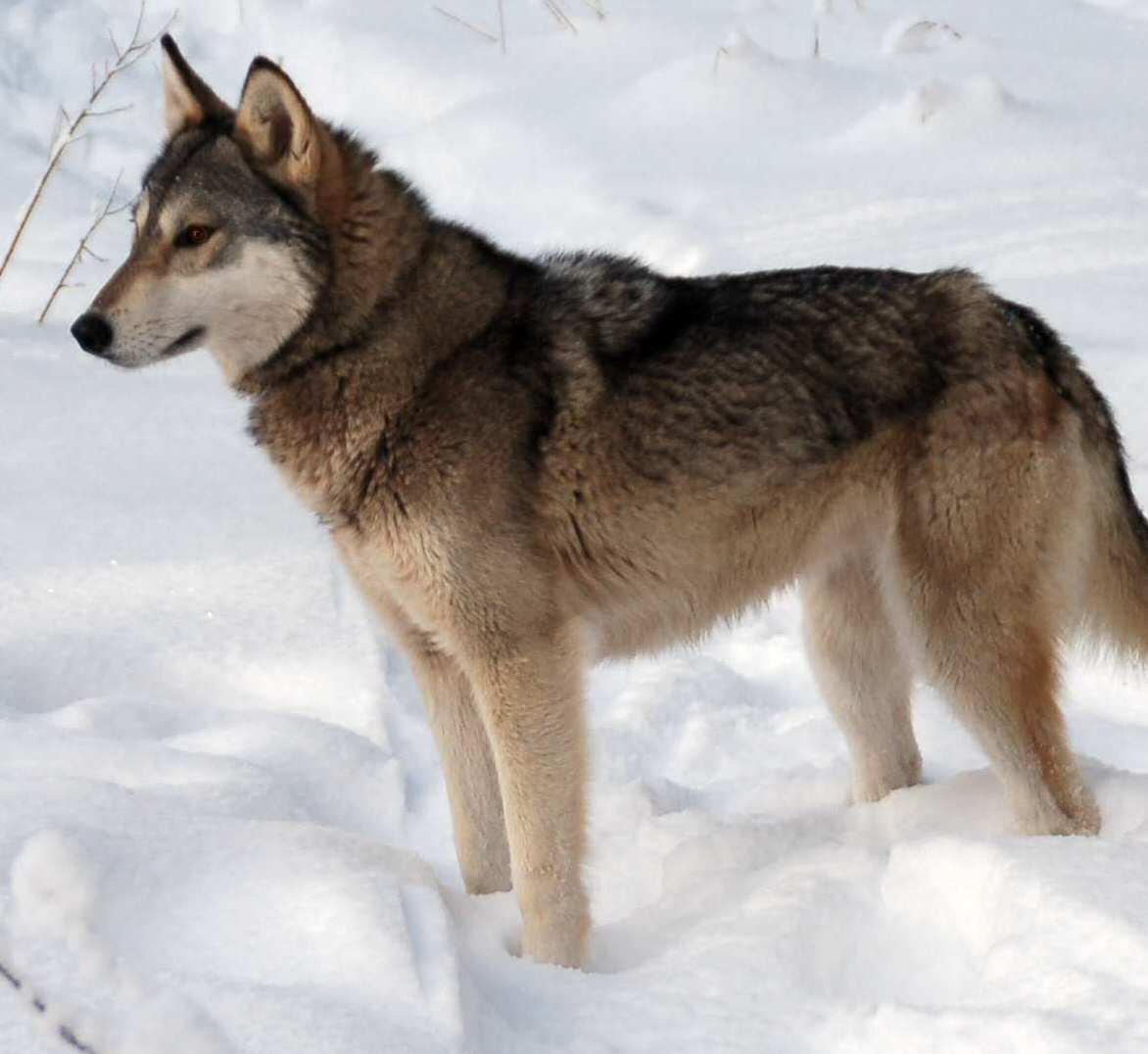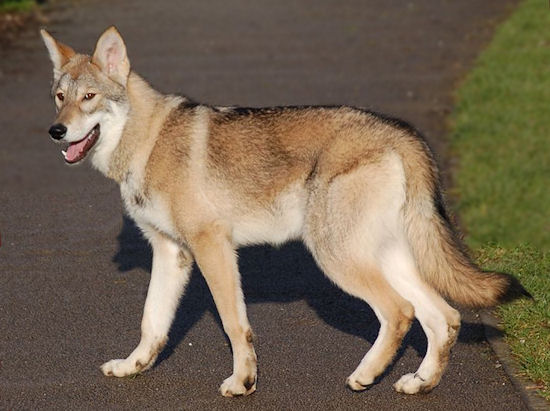Luckily the
wild types of most of the species that were domesticated are still extant. But
imagine the wolf was extinct because of human persecution. Conservation could
try to substitute their ecologic niche with other wild canines, or create an
effigy that can be released into nature in order to redevelop surviving
strategies and social behaviour patterns typical for that species, Canis lupus. Interestingly, there was some
kind of “breeding-back” effort for the wolf, the Tamaskan dog. It is a
crossbreed of less-derived dog breeds with the target to resemble the wolf in
appearance but without crossing-in any true wolves. And just like cattle and
horses, domestic dogs were domesticated in the middle east but likely
experienced introgression by European wolves, making the situation of the
Tamaskan very similar to that of other breeding-back attempts. The fact that living wolves still exist makes it possible to see how successful classical "breeding-back" can be.
The
breeding was started with a number of sled dogs that were crossed with Siberian
Huskies, Alaskan Malmute and German Shepherds in the 1980s. The similarity that
has been achieved in some individuals is indeed impressing. Tamaskan dogs have
size and proportions very reminiscent of some wolf populations, and also the
colouring is very similar to their wild type, with some subtle differences. Regardless
of that, Tamaskans still have a number of domestic features. For example, a
fifth toe on the hindquarters appears in some individuals, and the face of the
Tamaskan differs from that of wolves in being more paedomorph by having a
broader snout, larger eyes and a more domed front head, and I am pretty sure
the brain volume is reduced as well. These are typical domestication features evident in virtually all dog breeds, just like enlarged udders or dewlaps, a reduced brain volume and snout length are found in most domestic cattle breeds.
 |
| www.fotocommunity.de |
 |
| www.dogwallpapers.net |
 |
| www.hundeseite.de |
Without doubt the Tamaskan is a domestic
animal and not a wolf, although it does resemble its wild ancestor. It would be
interesting to see a genetic comparison of several dog breeds (including the
Tamaskan) with the several wolves from different subspecies, to see if there is
any significant difference between the relationship of the dog breeds to the
wolf. However, I do not expect the Tamaksan to be closer to the wolf than its
founding breeds, for the simple reason that it was selected for a few key genes
for phenotypic features, but the whole genome of a wild type consists of more
than that.
It would be
interesting to see how a population of Tamaskan dogs would do living in the European
or North American wilderness. There are a lot of examples of dogs surviving in
the wild, so I think the Tamaskan would do so as well. They’d probably evolve
hunting strategies and complex social behaviour just like, for example,
Dingoes. One could start a dedomestication experiment releasing a population of
Tamaskan dogs in a large area with deer and other prey animals and watch
evolution doing its work. After some amount of time, we could compare these
wild Tamaskans to true wolves. (I don't know if such a project is legally possible, I think it isn't).
What would
be the point of that? First of all, such a project itself would be interesting
enough. Furthermore, the history of the Tamaskan is surprisingly similar to
primitive cattle and horse breeds designed to be aurochs and tarpan proxies. It
shows that no matter how authentic an effigy breeding result will get, it will
always be different from the genuine wild type. But if man can achieve both
“bovine Tamaskans” and “equine Tamaskans” that resemble their wild type just as
good as this dog breed does and survive in nature in a similar manner to their
wild types, it would be awesome. And several projects are trying to do so. Such cattle and horses would be a prime basis
for dedomestication, for letting nature refine them and develop surviving
strategies and social behaviour necessary for survival so that they can re-occupy the vacant niche of their extinct ancestors.

Hello friend: I've been visiting your web and I found "great", with good newspaper articles.
ReplyDeleteI would like to share with you and your readers more information about the Tamaskan dog breed.
I hope you like my blog "Dogs and Cats" and leave me a comment if you fancy.
Greetings from Spain